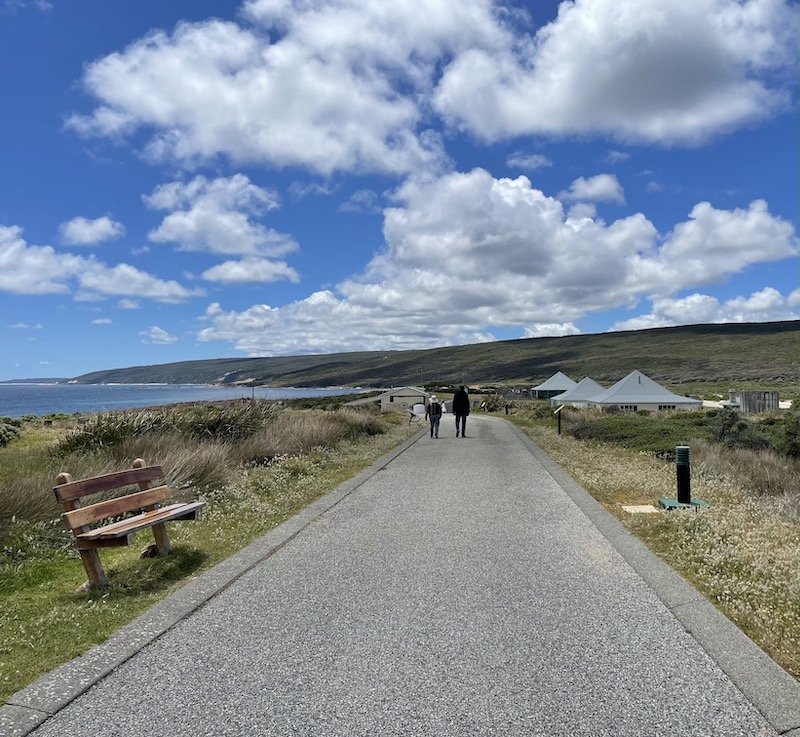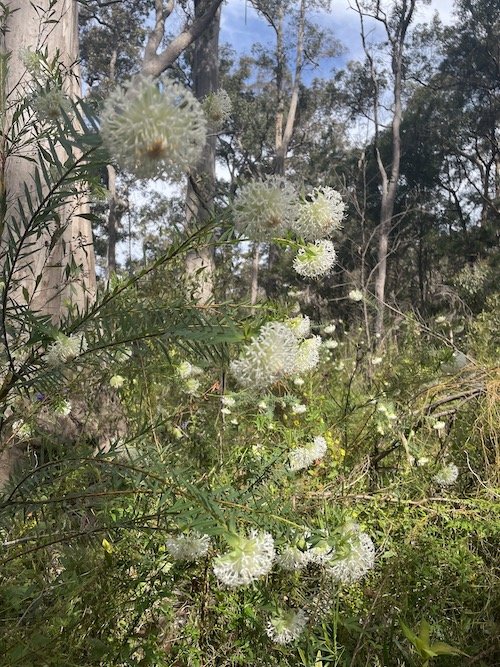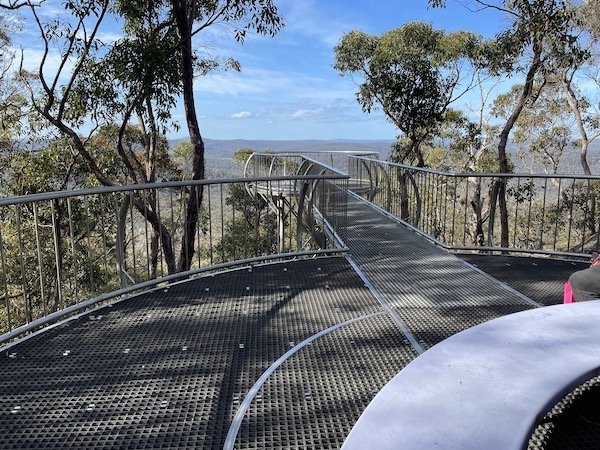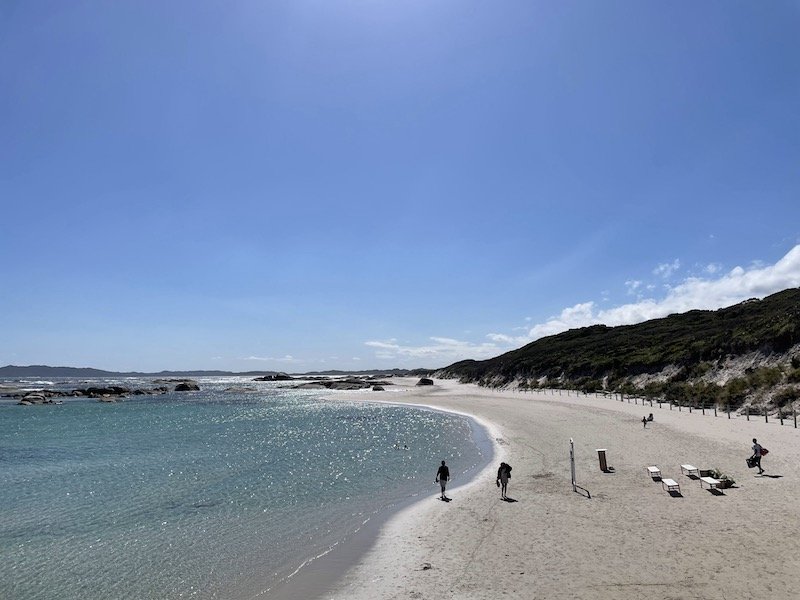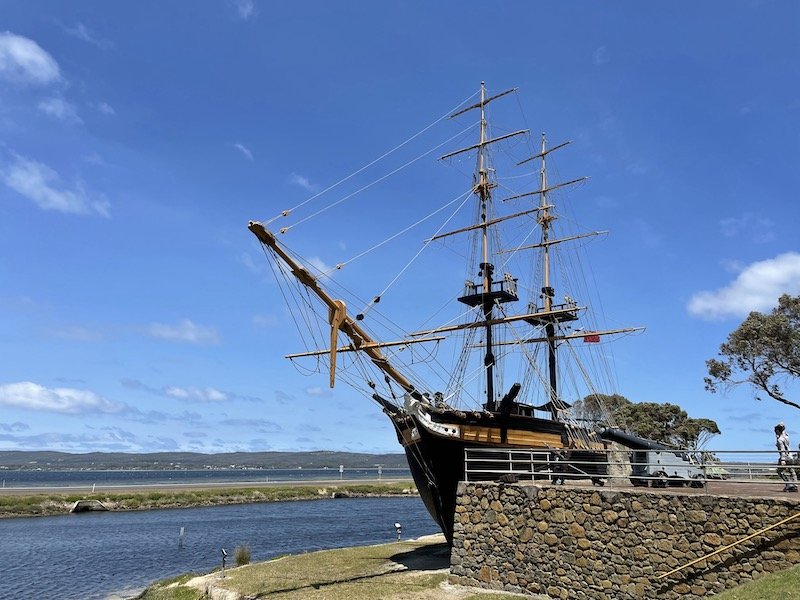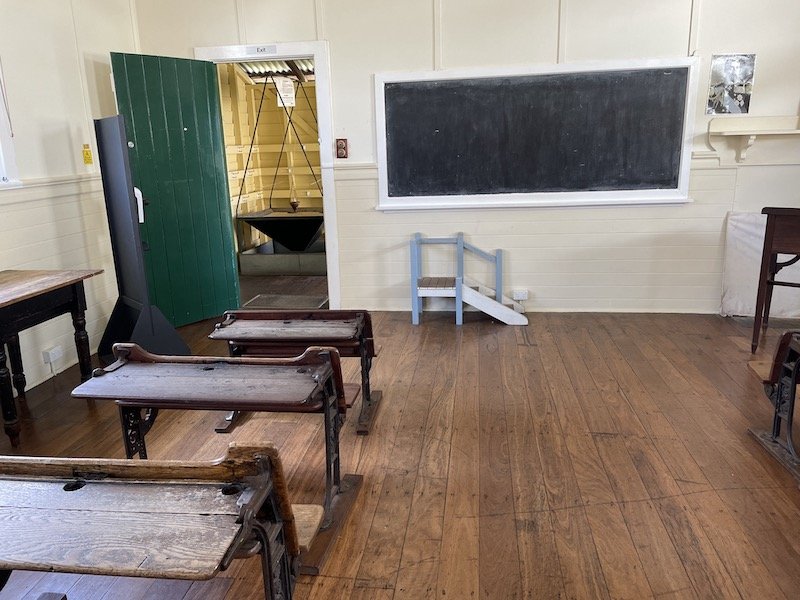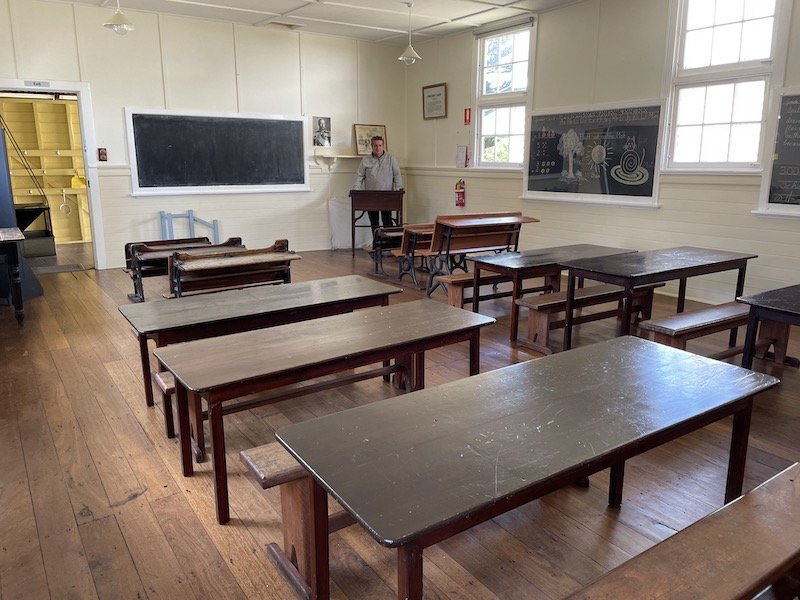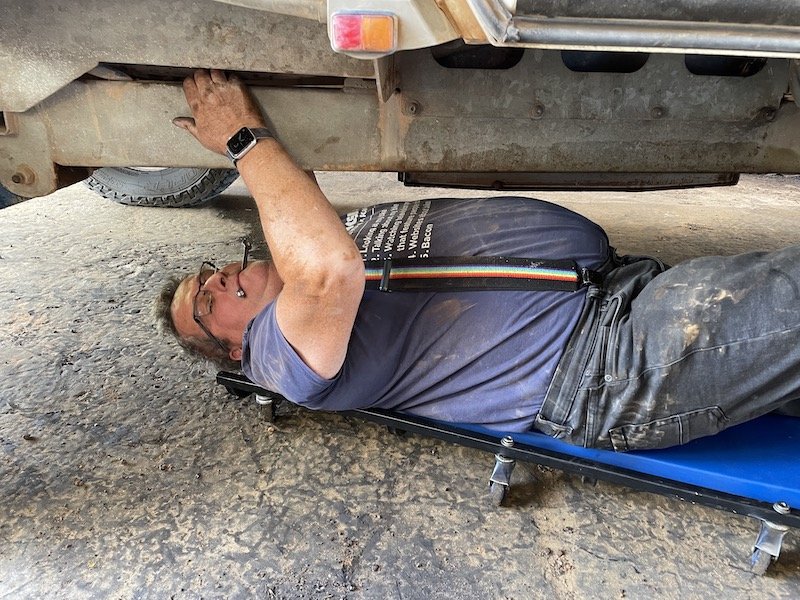Southern WA
At the southernmost tip of the Margaret River region in Western Australia is Doogalup, later named Cape Leeuwin in 1801 by English navigator, Matthew Flinders. It was named after the first European ship, The Leeuwin (Lioness), carrying Dutch explorers who spotted the land some 200 years earlier and thought it was a small island and chose not to settle. On a windswept rocky headland, where the Southern and Indian Oceans meet, stands Cape Leeuwin Lighthouse, the tallest lighthouse on mainland Australia offering protection in what were some of the busiest shipping lanes in the southern seas. Now automated, it used to be operated and maintained by three lighthouse keepers who lived with their families in stone cottages next to the tower. When we visited, the tower was encased in scaffolding as part of national refurbishment programme, so we couldn’t go up inside, but there was plenty to see in the excellent interpretive centre housed in one of the original lighthouse keepers’ cottages.
Cape Leeuwin Lighthouse being refurbished
The Lighthouse Keepers cottages on the right
The preserved building with its sparse but homely furnishings gave a flavour of the challenge of living on such an exposed site; clearly a difficult place to keep house and raise children. The full veranda had been totally enclosed after much pressure from the keepers who needed more protection from the elements. This provided space to grow tomatoes as well as for children to play and washing to dry without being literally blown off the rock! The interactive displays included video recordings of keepers and family members displayed as portraits recounting stories of their lives. One that stood out was how they disliked visitors as it interrupted their work so they frequently painted the lighthouse steps so they could legitimately turn nosey folk away.
Nearby, Jewel Cave is the most southerly ‘grotte’ (we like the French term for cave) on the Caves Road and is the largest show cave in WA. The intricate decorations are the finest and most well-preserved we’ve ever seen.
After the trip underground, we returned to doing tall things, starting with Caldynup, or Mount Frankland as it was named by Dr. Thomas Wilson in 1829 after the Surveyor General of Tasmania, George Frankland. Referring to to anything as mountains is rudely scoffed by Europeans and Americans as Australia doesn’t have any really high peaks. The highest is Mount Kosciuszko in NSW at 2,228 meters (7,310 feet) which is higher than Mount Snowdon so I think it counts, but maybe ‘Mount’ Franklin, at just 411m (1,348 feet) is a bit of a stretch. We chose to do the short summit trail up Caldynup; at only 1.2km we thought this would be manageable as I am having some hip discomfort with longer walks. I guess the clue was in the trail name ‘summit’, and we probably should have read the info more thoroughly, it may have been 1.2km but the climb was pretty steep from the car park.
The surrounding area is known by the Noongar people as Nor-Nor-Nup, the place of the norne, or black snake, although we didn’t see any. The trail winds its way through the tall karri forest which is heavily scented with beautiful flowers. It is paved and wheelchair/pram accessible to the first lookout however the last portion includes 306 steep steps and two ladders to reach the rounded exposed top of the rock. My tiresome vertigo battle kicked in as I clung on to the final steps, nevertheless, it was worth it for the experience of the forest and the fabulous views from the top.
Scented karri forrest, Caldynup (Mt Frankland) WA
Caldynup (Mt Frankland) Summit trail, Walpole WA
Accessible first lookout
View of the karri forest and Mt Roe
Summit view of Mt Roe on the horizon and fire tower
The building, which looks a little precarious clinging to the rock, is Towerman’s lookout; a fire spotting station which houses a human lookout during the peak fire season in Summer and Autumn. They have a view of around 367,000 hectares of almost entirely forrest which is an area slightly larger than the whole of Cambridgeshire in the U.K. On the horizon there is a pointy peak called Mt Roe which is Ian’s claim to fame. It is named after an ancestor on his mother’s side called John Septimus Roe, a British Naval officer and the first Surveyor-General of Western Australia. Roe surveyed the river known to the Noongar people as Derbarl Yerrigan, which was later named by English settlers as Swan River. The site of Perth, through which the Swan river flows, was chosen on his recommendation, and he was responsible for laying out the town.
We camped at Coalmine Beach Holiday Park near the small town of Walpole. It is on the innermost coast of Nornalup Inlet, a large body of calm sea that has a very narrow, shallow channel out to the much rougher Southern Ocean. This is one of several such inlets along the south coast that are popular with fishers and remote campers as well as providing sheltered beaches like the one at our site. The shady campground had lots of roos hopping about and a nice view over the water at sunset.
Roos at Colemine Beach Caravan Park, Walpole WA
Sunset at Nornalup Inlet, Walpole, WA
The next tall things we went to see were Red Tingle trees, a eucalyptus endemic to the far South-Western region of Australia. Tingles grow straight up to around 75m, they have huge buttressing trunks and resemble in stature the giant sequoia trees of California. The centre of the base of the trunk often rots or is burnt out long before the tree reaches maturity but it continues to grow leaving openings in the trunk large enough to walk through or even drive a car in. Unfortunately, such traffic damages the fine shallow roots that the tree relies on and the largest giant Tingle died as a result so this practice is now banned. Fortunately, at the Valley of the Giants visitor centre, there are other ways to experience these magnificent trees.
Historical images of the largest red tingle tree
The Tree Top Walk was another tummy turning experience that I knew would be well worth the angst. A gently sloping walkway threads up between the trees to around 40m then zig-zags through the canopy providing a birds eye view of, well, birds among other creatures. It felt a little intrusive actually so I hope they didn’t mind. The structure is designed to have as little impact on the forest floor as possible and the entire walkway has a total of 4m2 in contact with the ground allowing the regeneration of native plants as well as protection of the tree roots.
Tree Top Walk, Walpole, WA
Ian momentarily letting go to take a picture of me!
Back at ground level, we joined a guided walk with the wonderful Helen from Wales who, after 30 years in Australia, would not have sounded out of place in the Rhonda. She was really engaging and an absolute font of knowledge about the Red Tingles and all the other flora and fauna as she guided our little group along the board walks. I experienced creating a lather from the leaves of the Soap Tree and a little water. We learned that the She-Oak, a native Australian tree from the Casuarinaceae family, that looks like a conifer but has hard wood like that of an oak. It is said to have got its name because the wood wasn’t quite as good as European oak, so it was rudely suggested that is was an inferior feminine version of the stronger oak. We were fortunate to briefly see the aptly named Splendid Blue Fairy Wren which, although brightly coloured is hard to spot as it zooms around. The iridescent male presents the brown female with pink or purple flowers as part of its courtship ritual. What a beautiful thought.
Anne inside a burnt out red tingle tree which was still alive at the top
As we travelled east from Walpole, we checked out the Wiki Camps app for places of interest to see. When a place called Elephant Rocks popped up, we thought it looked lovely and we weren’t disappointed. The cracks in the massive rocks at the waters edge have been worn in such a way that they resemble a herd of elephants, jostling closely together in the way that they do. They really are quite breathtaking and you expect to hear a great trumpeting at any moment.
Elephant rocks, Walpole, WA
This land is that of the Minang language group of the Noongar people and I found many references on tourist guides to Elephant Rocks being a traditional birthing place. However, I couldn’t find any detail about this nor what the traditional name is for the rocks; there have never been elephants here so perhaps they are just rocks. There is a rather etherial feel to the area but I’m not sure about giving birth on a beach. The sea at this point is clear turquoise lapping on white sand and, just nearby at Green’s Pool, preparations for a wedding ceremony at the waters edge were underway. We didn’t stay to watch but could imagine why they had picked such a lovely spot to tie the knot.
Walk across the rocks from Green’s Pool to Elephant Bay, WA
Wedding preparations at Green’s Pool beach, WA
Next stop was the coastal town of Albany where we visited a replica of the Brig Amity, the vessel that carried settlers and convicts to establish the first European settlement on the west coast of Australia in 1826. The video in the previous link and audio guided tour of the ship provided a flavour of what it may have been like aboard a convict ship as crew, passenger or convict. The cramped space provided a home for people and animals for months on rough seas; even the officers quarters were sparse and airless.
Replica of the Brig Amity, Albany, WA
Aboard the Brig Amity, Albany, WA
It seemed that the expedition initially forged peaceful relations with the local Aboriginal Minang Noongar people. There is evidence that the ships Captain, Major Edmund Lockyer, arrested some sealers who had kidnapped some indigenous people. He returned them to their home and insisted that the indigenous people were not to be disturbed again.
At the nearby Museum of the Great Southern, we discovered this relationship changed as the Australian government implemented increasingly draconian laws restricting the movement and activities of Aboriginal people. The Dog Act 1855 made it impossible for Aboriginal families to keep the animals that were crucial for hunting food and generating income. The Aborigines Act 1905, the Native Administration Act 1905-1936 and the bizarrely named Native Welfare Act 1905-1954 increasingly controlled the lives of Aboriginal peoples until the 1970s. Where people lived, who they could marry, even the right to bring up their own children and teach them about language and tradition were regulated by the sate. In order to make a living, some sought Australian citizenship which could be granted to an Aboriginal person if they could convince a magistrate that they had severed all ties to extended family and friends, was free from disease and was of industrious habits. If they were later found to have had any contact with other Aboriginal peole, including their own children, their citizenship would be removed and they would be punished with imprisonment.
Well beyond this period, the state continued to impose control simply by defining who is Aboriginal. People of Aboriginal descent vary considerably in appearance and many do not have dark skin so it is not only impossible, but deeply offensive, to judge ‘how Aboriginal someone is’ by how they look. Government departments and other organisations made people ‘prove’ their heritage to be eligible for everything from ‘protected’ jobs and educational bursaries, business loans and arts grants. In fact the challenges for Aboriginal people are still apparent today and this video discussion provides an excellent insight into this issue. Towards the end of the clip, Prof. Shane Houston, from the University of Sydney, explains that ‘it is not about what a person looks like that makes them Aboriginal; it is about self. Your identity is your spirit, a set of values, a force which informs your decisions that is a product of your story and your journey. Your experiences, community and family influence this but your identity comes from within you.’ Identity is distinct from heritage, although one influences the other. A person may have Aboriginal heritage and be proud of that but it may not define their identity because it not be not the story and journey that informs their decisions.
This got me thinking about my own identity and heritage and the tussle that goes on my head when someone asks me if I’m Australian or English. In my early years, although I was in England, I was immersed in Australian-ness at home, mainly from my father and older brothers, and I most certainly identified as Australian. As I aged, the influences that built my story and accompanied me on my life journey were predominantly English. I am very proud of my Australian heritage, and this undoubtably part of my story, but, deep down, I feel that I identify as English if asked to choose.
Reflecting on this personal feeling, and how I have been able to freely arrive at this conclusion, makes me realise how challenging it must be if your story is forcibly changed. This clearly happened to Aboriginal and other indigenous people around the world during colonial invasion but may also be the case in other settings. Identity is most certainly impacted by the hideous practice of ‘ethnic cleansing’ and it must worsen the experience of refugees and immigrants when they are expected to assimilate to the customs and ways of their new country and suffer abuse for grouping together to maintain culture, art, traditions and language. Perhaps this also happens where attempts are made to squash a local language in the way Welsh or Cornish were once removed from the school curriculum. I’ve never really considered my identity in this way before but, as they say, you don’t know what you’ve got till its gone. I have a better understanding of the importance of maintaining cultural traditions, language and story and can see that identity comes from within and cannot be imposed, neither can it be decided by anyone else.
There where two further exhibitions which felt close to my heart, the school room and the military nurses. Back in the mid 1950s, my father gave up a job in a prestigious private boys school to take up a new challenge as the master in a one-teacher school at Neuarpurr in rural Victoria. He and my mum and their four little boys moved into the house attached to the school room and he taught a single class of children aged 5-18 years. So the preserved school room brought to life the memories my parents shared and of our visit in 2007 to his classroom, now a private home. The school room in Albany is also brought to life by being used for school holiday activities, special events and education programs, as well as to house the Museum's Community Exchange Library.
One-teacher school room, I love the steps at the front for the littlies to reach the blackboard
One-teacher school room, note the desks get larger towards the back of the class
The other exhibition was of military nursing history which included many photos and personal accounts of nurses deployed to war zones. They witnessed, first hand, the horrors of war and frequently provided the last comforting words dying soldiers heard. Although these women received campaign medals, they were rarely mentioned in reports from battlefields and largely went unrecognised so their part in conflict is not widely known, even within military circles. One nurse described attending a Vietnam War memorial ceremony where she was told by a member of a veterans association that she should be wearing her husbands medals on the other side and when she explained that she had served in the conflict herself, he did not believe her. The circumstances in which these nurses practiced is a very long way from my own nursing experience but their stories of camaraderie in challenging situations and lifelong friendships were certainly familiar and it was lovely to see them celebrated.
Back on the subject of language, as you may have noticed in this and previous posts, the town names in this part of Australia are very distinctive in that many end in ‘up’, there are at least a hundred of them. In the dialects of the Noongar people, ‘up’ means ‘place of’ and follows a description of what was to be found in that place. Wikipedia has a great explanation and full list but as an example Dwellingup - place of nearby water, Jandabup - place of little eagle and Kirup - place of summer flies (we decided not to go there!).
As we left Albany, we spotted some silo art. All over Australia there are giant grain silos, usually in rows of three or four, which are mostly a bit of an eyesore and a reminder of the corporate grip on farming, but since 2015, artists have used these vast blank canvas’ to produce some mega art. The Australian Silo Art Trail now stretches over 8,500km beginning in Northam WA and ending in Three Moon Qld. The silos in Albany are on the Public Silo Trail which was the first trail and is now incorporated into the national one. This video shows an artist at work which provides some scale to such projects. The silos in Albany sport a painting of a Ruby Sea Dragon, a little creature which was first described in 2007 when a dead one washed ashore, but the little beastie wasn’t filmed in its natural environment off the coast of WA until 2017. It seemed especially fitting to give this little creature such a big welcome.
Between Albany and Esperance, our caravan brakes failed; not ideal when towing a brick weighing nearly two tonnes. The solid brake pipe had been rubbing against the corner of a steel water tank which had worn a hole in the protective sleeve, then the pipe, dumping the brake fluid onto the road. We limped the 300km into Esperance and found Rick, a delightful mechanic at Southside Auto Centre who, although unable to fit us in for a few days, happily provided the use of a shady space and a slide trolley so we could strip it ourselves. As the mechanics mate, I sat on an old tyre to sort and pass Ian the tools whist he got filthy under the van. Rick took just five minutes to flare and repair the pipe with a joiner before we refitted it. He kindly provided nearly a litre of brake fluid but, try as we might, he would not accept any payment. As well as being a thoroughly nice bloke, I think he was also amused by our double act and that I filed my nails with a multitool whilst engaging him in conversation about the classic Kawasaki Ninja living in his workshop.
Rick’s garage, Esperance, WA
Man at work

